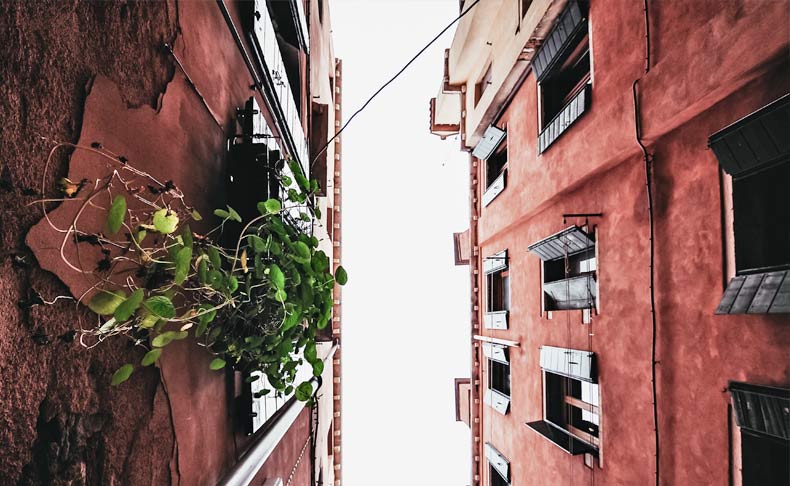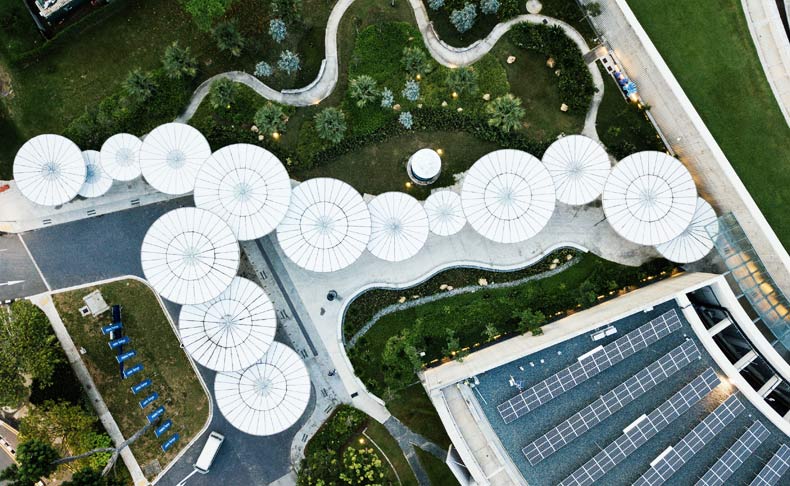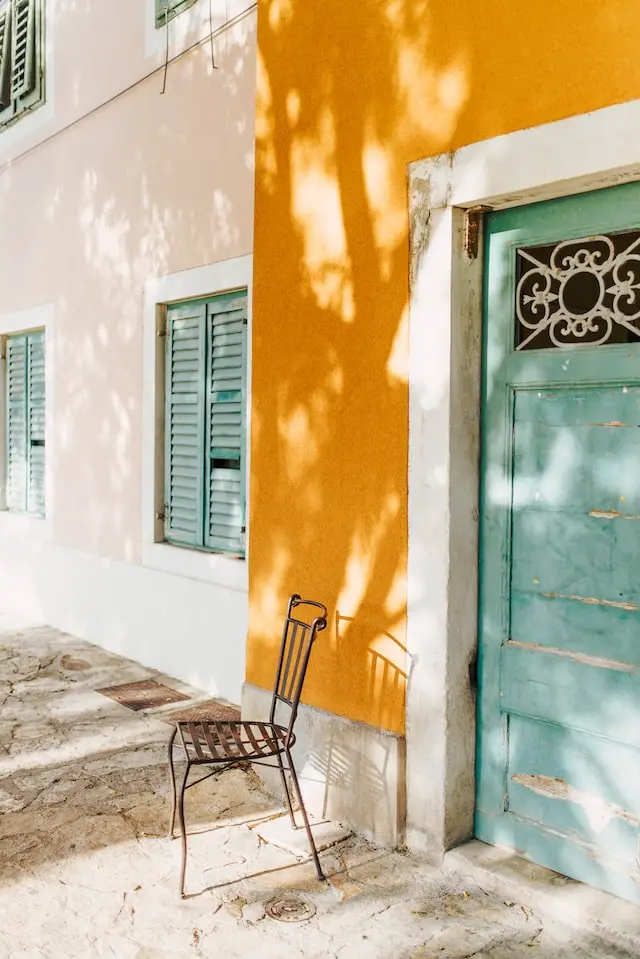Many of us already favour sustainable alternatives in our daily lives but with the growing worries surrounding the climate crisis at the forefront of our minds, we are now trying to consider eco-conscious choices when making bigger decisions too. Travelling is a popular pastime and one that receives a lot of flack when it comes to carbon emissions and sustainability. However, there are companies out there who are trying to rethink the age-old practices surrounding travel and hospitality in order to create greener, more sustainable alternatives. We already researched sustainable travel and collected the most sustainable travel destinations in 2020. Here we look at some of the top eco-design ideas in hospitality architecture to show you that it is possible to choose environmentally-friendly hotels and lodges when travelling.
Restoration

While there are new hotels opening all the time, these aren’t always projects that have involved deforestation or destruction of natural habitats in order to create space for a new building. Some hoteliers choose to adopt old buildings and instead restore them to their former glory making them both charming and eco-conscious.
Locanda La Gelsomina in Malta, for example, has chosen to renovate the 16th-century property into a boutique, eco-hotel; combining original features with sustainable solar panels and a rainwater collection system.
This shows that you can have the best of both worlds, using the solid structures of centuries gone by as the base for a modern, eco-design. Restoration reduces the need for new materials and simply allows architects to upcycle what is already there.
Reclaimed Materials

Another eco-friendly alternative when it comes to hospitality architecture is using reclaimed and local materials. Architects and hoteliers have realised the importance of having a green ethos when it comes to attracting an audience of discerning, environmentally-conscious travellers.
In order to receive the desired LEED Certification companies must consider sustainability when it comes to local impact, water and energy efficiency, material selection and indoor environmental quality. Harmon Guest House is one such property which has received a LEED Gold Certification for its use of steel and reclaimed redwood slats on the exterior, its fallen eucalyptus tree check-in desk and its nod to sustainable transportation in the form of an in-built bus stop bench in the face of the hotel and a fleet of bicycles available for guest use.
While many developing countries have been using reclaimed materials for years (as it was both sustainable and cost-effective), we are now seeing more and more Western countries creating hotels with a sustainable, organic focus.
Biophilic Design

Biophilic Design is an architectural style that has organic use of the environment at its heart as it is a concept that centres around increasing occupant connectivity to nature. Biophilic Design aims to create healthy and productive habitats for modern humans through the use of direct and indirect nature. These design features include the use of natural light, ventilation, air-purifying plants and multi-sensory stimulators such as water and fire.
It is thought that Biophilic Design goes all the way back to The Hanging Gardens of Babylon, and while we have had years of minimalist design and soulless hotel chains, it’s now time to bring back to the joy of plant-laden landscapes and nature integrated into urban hospitality.
Concepts such as Greenery Unlimited, Vincent Callebaut’s Arboricole, and the Foster + Partners designs for the new PGA TOUR headquarters in Ponte Vedra Beach, Florida all show that Biophilic, LEED-certified designs are the perfect way to bring about health, environmental and economic benefits for the building occupants.
One of the finest examples of Biophilic Design in hospitality is the Hudson Hotel in NYC with its canopy ceilings, ivy-strewn walls and rich wooden flooring, not to mention the hotel’s own Private Park, a modern urban oasis.
Renewable Power Sources

Renewable energy sources are often at the forefront of sustainable hospitality design as not only does it show that you are conscious about protecting the environment but it usually works to reduce operational costs too! Green buildings use on average 26% less energy, emit 33% less carbon dioxide, use 30% less indoor water and send 50%-75% less solid waste to landfills and incinerators, according to the US Green Building Council (USGBC). It, therefore, seems like a no-brainer that sustainable, green building practices would be the way forward.
Properties that are leading the way in terms of renewable energy sources include Noah Surf House in Portugal, a solar-powered eco-hotel and Lapa Rios Eco-Lodge in Costa Rica which uses both solar panels and bio-gas created by pig waste!
Norwegian architects Snøhetta are looking to take things one step further with their plans to design the world’s first energy-positive hotel in the Arctic Circle.
Corporate Responsibility
It is not just the hotel rooms and communal areas that need to have eco-design at their centre, but also corporate spaces such as conference rooms. Laura Noctor, director for corporate responsibility at the InterContinental Hotels Group (IHG) says it’s not just about cutting operational costs… also about meeting demand from customers. Corporate clients have their own targets and they want to know that we are helping them to meet those targets”.
As such, conference planners are starting to take into account the same five categories that make up the LEED standards when planning where their next event will take place. Whether they opt for a conference centre offering a plant-based menu to reduce their environmental impact or go for an eco-friendly auditorium such as the planned Plasencia Conference Center, it’s clear that eco-design plays a central role in business decisions.
While these are the latest eco-design trends in hospitality architecture, we are sure to see more and more innovative concepts and designs come into play over the next few years, not least because we, as consumers, are putting pressure on businesses to offer fantastic, eco-friendly options. Let us know which are your favourite eco-design hotels, hostels and lodges in the comments below!





